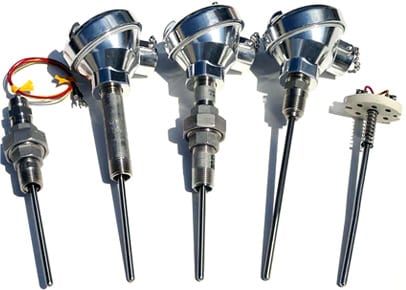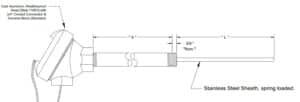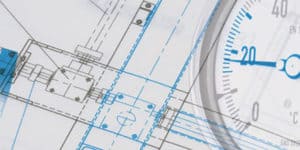Metrology Glossary: Loop Resistance
What Is Loop Resistance?
Loop resistance comprises the combined resistance of both the thermocouple wires and any connectors or terminals within the circuit. The resistance of the thermocouple wires is contingent upon factors such as the type of metal it is made from, the wire’s diameter, and the wire’s length. The significance of loop resistance lies in its potential impact on the accuracy of thermocouple measurements. When loop resistance exceeds acceptable levels, it may result in the attenuation of the voltage signal from the thermocouple, ultimately leading to inaccurate temperature readings.
Why Is Loop Resistance Important?
- Enhancing Temperature Accuracy: Maintaining loop resistance within acceptable thresholds is crucial for ensuring precise temperature readings. This practice prevents significant attenuation of the voltage signal generated by the thermocouple, promoting accurate temperature measurements.
- Improving Signal Transmission: Minimizing loop resistance plays a key role in reducing voltage drops along thermocouple wires, resulting in robust signals reaching the measurement instrument. This is particularly valuable for scenarios involving lengthy cable runs or environments with elevated background noise levels.
- Optimal Selection of Thermocouple Components: A comprehensive understanding of how wire diameter and material impact loop resistance facilitates the selection of the most suitable thermocouple configuration for specific applications. This approach ensures precision in measurements while balancing cost considerations and minimizing the risk of signal loss.
- Efficient Thermocouple Circuit Design: Knowledge of factors influencing loop resistance allows engineers to design circuits that effectively mitigate unwanted resistance, thereby optimizing signal transmission. This involves meticulous selection of connectors, terminals, and the implementation of shielding techniques.
- Effective Troubleshooting for Thermocouple Systems: Identifying and addressing high loop resistance is crucial for diagnosing inaccuracies in temperature readings. Measuring loop resistance and comparing it against acceptable values aids in troubleshooting and resolving potential issues within thermocouple systems.

Related Terms
A thermocouple calibrator is an essential tool used in temperature measurement. It serves to validate the accuracy of thermocouples, which function as temperature sensors by converting temperature differences into electrical...
Thermocouple break protection is a safety measure for identifying and addressing thermocouple circuit failures, crucial for averting thermal runaway....
A thermocouple (TC) is a specialized temperature sensor that uses two dissimilar metal conductors joined at one end to form a junction, which serves as the point for temperature measurements....







